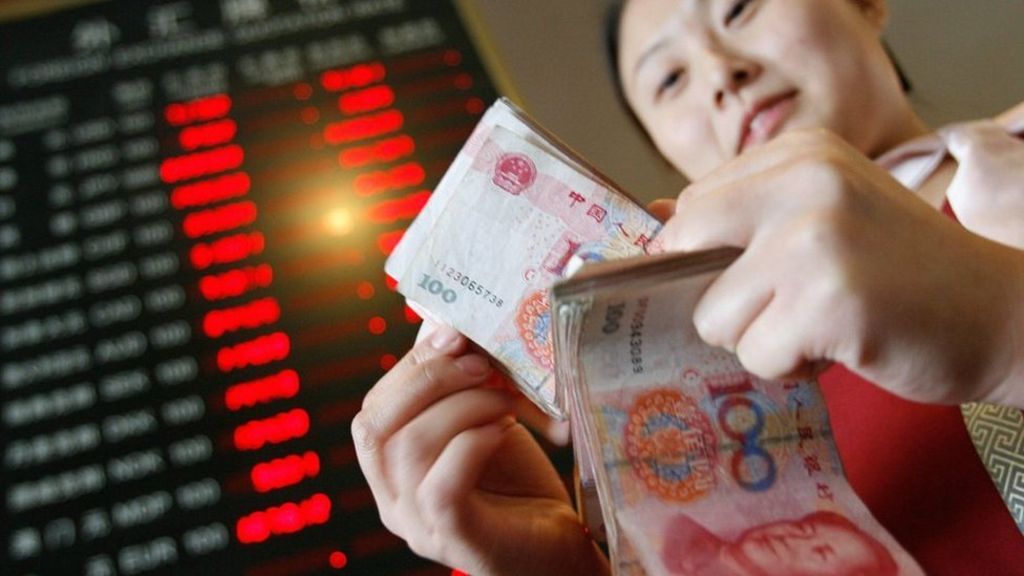
Introduction
The trade relationship between Africa and China has grown exponentially over the past two decades, with bilateral trade exceeding $280 billion annually. China has become Africa’s largest trading partner, financing massive infrastructure projects from railways in Kenya to ports in Tanzania. At the same time, African nations supply the Chinese market with everything from crude oil and minerals to agricultural products and textiles. However, despite this massive economic exchange, businesses on both continents have long struggled with a critical bottleneck: cross-border payments.
Consider the typical journey of a payment from Nairobi to Shenzhen. A Kenyan electronics retailer needs to pay a Chinese manufacturer for a shipment of smartphones. The retailer initiates a wire transfer from their local bank, which then routes through multiple correspondent banks, perhaps stopping in London, New York, or Dubai, before finally reaching the supplier’s bank in China. At each stop, fees are deducted, exchange rates are applied, and processing time is added. What should be a simple transaction becomes a week-long odyssey costing thousands of dollars in fees, during which both parties are left wondering where their money has gone.
Traditional banking channels are slow, expensive, and often unreliable. For small and medium-sized enterprises, the backbone of African economies, these payment challenges can mean the difference between profitability and failure. A delayed payment might cause a Chinese supplier to hold a shipment, leaving an African retailer with empty shelves during peak season. Currency fluctuations during the payment window can turn a calculated profit margin into an unexpected loss. Banking fees that seem small on paper compound into significant costs when multiplied across dozens of transactions per year.
Enter stablecoins, a digital currency innovation that’s quietly revolutionizing how African and Chinese businesses transact. Unlike the wild volatility of Bitcoin or Ethereum, stablecoins maintain a steady value by being pegged to traditional currencies like the US dollar. They combine the speed and efficiency of cryptocurrency with the predictability of fiat currency, creating what many traders are discovering is the perfect instrument for international B2B payments.
The adoption curve is already underway. In cities like Lagos, Accra, and Johannesburg, a growing number of import-export businesses are settling invoices in USDT or USDC, bypassing traditional banks entirely. On the Chinese side, manufacturers and wholesalers, particularly in tech hubs like Shenzhen and Guangzhou, are increasingly comfortable receiving payments in stablecoins, which they can quickly convert to Yuan through local exchanges or over-the-counter desks. What started as an experiment by tech-savvy early adopters is rapidly becoming mainstream practice among businesses tired of the old system’s inefficiencies.
The Current Cross-Border Payment Landscape
Before understanding how stablecoins simplify payments, it’s important to look at what African importers currently face when sending money to China. For years, African businesses importing goods from China have faced a gauntlet of payment challenges:
- High Transaction Costs: Traditional wire transfers and letters of credit can cost anywhere from 3% to 7% of the transaction value, eating into already thin profit margins. For a $100,000 shipment, that’s up to $7,000 lost to fees alone.
- Glacial Processing Times: Standard international transfers can take 3-7 business days, or even weeks when intermediary banks are involved. This delay creates cash flow headaches and complicates inventory planning.
- Currency Volatility: Many African currencies fluctuate significantly against the Chinese Yuan. Between the time an invoice is issued and payment is received, exchange rate movements can erode profits or inflate costs unpredictably.
- Limited Banking Infrastructure: Some African businesses, particularly smaller traders, struggle to access reliable international banking services. Correspondent banking relationships have actually decreased in recent years, making cross-border payments even more challenging.
- Opacity and Tracking Issues: Once a payment enters the traditional banking system, it becomes difficult to track. Funds can get held up at intermediary banks without clear explanations, leaving both parties frustrated.
For small traders and local importers, these issues mean one thing: reduced competitiveness. When payments take days to clear and fees pile up, opportunities are lost.

What Are Stablecoins and Why They Matter
Stablecoins are a type of cryptocurrency designed to maintain a stable value by pegging their worth to an underlying asset, typically a fiat currency like the U.S. dollar.
For example:
- USDT (Tether) – Pegged 1:1 to the U.S. dollar and widely used in global trade.
- USDC (USD Coin) – Issued by Circle, known for transparency and regulatory compliance.
- BUSD – Formerly issued by Binance and backed by U.S. dollar reserves.
Unlike volatile cryptocurrencies such as Bitcoin or Ethereum, stablecoins offer price stability, blockchain transparency, and instant global accessibility. For African traders, this means being able to hold digital dollars and send them to partners in China without needing to pass through banks or deal with exchange rate swings.
How Stablecoins Simplify B2B Payments Between Africa and China
1. Faster Settlements
Stablecoin transactions are nearly instantaneous. What would normally take days through traditional banks can now take minutes. This speed improves cash flow management and allows Chinese suppliers to ship goods faster once payments are confirmed on the blockchain.
For African importers, faster settlement also reduces the time capital is tied up in transit, improving overall business efficiency.
2. Lower Transaction Costs
Because stablecoin payments move peer-to-peer on blockchain networks, they bypass intermediary banks and payment processors. Transaction fees typically range from a few cents to a few dollars, depending on the network used (such as Tron, Ethereum, or Binance Smart Chain).
For example, an importer in Kenya can send USDT on the Tron network to a supplier in Guangzhou with fees under $2, a fraction of traditional wire transfer costs.
3. Currency Stability and FX Protection
Stablecoins pegged to the U.S. dollar protect African traders from exchange rate volatility. Instead of worrying about fluctuating local currency rates, importers can store and transfer funds in digital dollars that maintain a consistent value.
This helps both parties plan better: the African buyer knows exactly how much they are paying, and the Chinese seller receives predictable value.
4. Accessibility for the Unbanked or Underserved
Many African SMEs lack access to robust international banking services. Stablecoins provide an alternative, enabling anyone with a smartphone and a digital wallet to make international transactions.
Platforms like Yogupay are bridging this accessibility gap by allowing African businesses to easily convert local currency to stablecoins, pay suppliers abroad, and even receive payments in return.
5. Transparency and Traceability
Each transaction made with stablecoins is recorded on the blockchain, creating a transparent, tamper-proof ledger. This transparency builds trust between trading partners and helps reduce fraud, a growing concern in cross-border trade.

Real-World Use Cases
Let’s look at how stablecoins are already transforming B2B payments in the Africa–China trade.
1. African Importers Paying Chinese Suppliers
A Nigerian electronics retailer can now pay a Chinese wholesaler using USDT. Through platforms like Yogupay, the importer converts Naira to stablecoins and sends payment within minutes. The Chinese supplier receives the equivalent value in USDT and can easily convert it into Chinese Yuan or other currencies.
This eliminates delays, reduces costs, and ensures both parties get real-time transaction confirmation.
2. Stablecoin-Friendly Platforms Enabling Seamless Settlements
Yogupay is among the platforms simplifying Africa–China trade by integrating blockchain technology into cross-border payments. Businesses can:
- Fund accounts using local currency.
- Convert to stablecoins instantly.
- Send payments to Chinese suppliers with low fees and fast settlement times.
These platforms act as bridges between traditional finance and crypto, ensuring compliance while enhancing payment efficiency.
3. Chinese Suppliers Embracing Digital Payments
Many suppliers in China now accept stablecoins due to their convenience and speed. For Chinese exporters, stablecoins reduce dependence on foreign banks and eliminate uncertainty around delayed USD receipts.
Regulatory and Security Considerations
While stablecoins bring numerous benefits, businesses must also be aware of the regulatory and security landscape.
1. Evolving Regulatory Frameworks
African countries have different stances on digital assets:
- Nigeria recently lifted restrictions on crypto, allowing regulated exchanges to operate.
- Kenya is exploring a digital shilling and gradually warming up to crypto-based remittances.
- South Africa has classified crypto assets as financial products, improving oversight and consumer protection.
The trend is clear: governments are moving toward clearer regulation, not prohibition.
2. Compliance and KYC
For B2B payments, compliance remains essential. Using licensed and regulated platforms like Yogupay ensures that Know Your Customer (KYC) and Anti-Money Laundering (AML) standards are met, keeping transactions secure and legitimate.
3. Security Best Practices
Businesses should safeguard wallets and private keys, enable two-factor authentication, and use custodial wallets with insurance coverage for large transactions.
By combining the speed of blockchain with the compliance of fintech, stablecoin platforms are making international trade both safe and efficient.

The Future of Africa–China Trade with Stablecoins
The future of Africa–China trade is becoming increasingly digital, and stablecoins are poised to play a pivotal role in reshaping how money moves between the two regions. As more businesses adopt blockchain-based payments, several emerging trends point to a more transparent, inclusive, and efficient trade ecosystem.
1. Mainstream Adoption by SMEs and Informal Traders
While multinational corporations already have access to advanced banking and FX services, small and mid-sized enterprises (SMEs), the backbone of African trade, often face limited options. These businesses account for over 80% of employment in Africa, yet they struggle with expensive international payments and capital restrictions.
Stablecoins level the playing field. A small textile importer in Kigali or a phone accessories wholesaler in Lagos can now pay Chinese suppliers directly in digital dollars without needing a foreign currency account or complex paperwork. This accessibility empowers more entrepreneurs to participate in global supply chains.
Moreover, as mobile-first platforms like Yogupay integrate stablecoin wallets into familiar user interfaces, stablecoin adoption will move beyond crypto-savvy traders to mainstream business owners. The result? A thriving digital economy driven by convenience and trust.
2. Integration with Central Bank Digital Currencies (CBDCs)
China’s Digital Yuan (e-CNY) and several African CBDCs, such as Nigeria’s eNaira, Ghana’s eCedi, and South Africa’s Project Khokha, are creating a new digital financial infrastructure. The next big opportunity lies in connecting these systems with stablecoins.
In the near future, a Kenyan trader could:
- Convert Kenyan Shillings to USDC through a licensed fintech platform.
- Instantly pay a Chinese supplier who receives Digital Yuan on their WeChat wallet.
Such interoperability between CBDCs and stablecoins could dramatically simplify settlements, strengthen monetary oversight, and reduce the reliance on the U.S. dollar as an intermediary.
Yogupay and similar platforms are well-positioned to bridge this gap by building the rails that connect blockchain-based currencies to regulated digital banking ecosystems.
3. Supply Chain Transparency and Smart Contracts
Beyond payments, stablecoins and blockchain can help digitize entire supply chains. Through smart contracts, businesses can automate payment releases based on shipment milestones or delivery confirmations.
For example, an African importer could escrow funds in USDC, and the payment is automatically released to the Chinese supplier once logistics data confirms the goods have arrived at port. This reduces disputes, increases trust, and simplifies auditing for both sides.
Over time, blockchain-based invoicing, customs documentation, and logistics tracking will create an end-to-end transparent trade environment, cutting out inefficiencies that have long plagued Africa–Asia commerce.
4. Emergence of multi-Currency Stablecoins
Currently, most stablecoins are pegged to the U.S. dollar, but the next generation may include multi-currency baskets, for example, stablecoins backed by both USD and CNY reserves.
Such innovation would reduce dependency on any single currency and further simplify conversions between African and Chinese markets. Imagine a “TradeCoin” designed specifically for Africa–China B2B payments, a blockchain token redeemable in both Yuan and Shilling equivalents.
Fintech innovators are already experimenting with such models, and African payment startups could soon lead the way in regionalized stablecoin solutions.
5. Regulatory Maturity and Institutional Adoption
Regulatory clarity is emerging faster than expected. As central banks and financial authorities better understand blockchain’s potential, they’re moving from prohibition to pragmatic regulation.
Countries like South Africa, Kenya, and Nigeria are already developing frameworks for digital assets and stablecoins. This will open the door for banks, fintechs, and logistics companies to integrate stablecoin payment systems legally and securely.
Eventually, we could see African banks offering stablecoin wallets or trade finance in digital currencies, backed by real-world assets and regulatory oversight, creating a safer bridge between traditional finance and Web3.
6. A More Inclusive and Connected Trade Ecosystem
Ultimately, stablecoins have the potential to democratize trade across Africa and Asia. By eliminating friction, they empower more women-owned businesses, youth-led startups, and rural entrepreneurs to access global suppliers and customers.
This inclusion isn’t just financial, it’s also economic empowerment. Businesses that were once locked out of international trade due to high transaction costs and currency barriers can now participate seamlessly.
As cross-border digital literacy improves and as fintech players like Yogupay continue to simplify user experiences, the vision of a borderless African trading community becomes increasingly attainable.
7. Looking Ahead: Stablecoins as the Default Trade Currency
In the next five years, stablecoins may become as common in international trade as credit letters and wire transfers are today. With speed, cost-efficiency, and transparency on their side, they will likely evolve into the default settlement medium for Africa–China SME trade.
From wholesale marketplaces in Guangzhou to e-commerce exporters in Nairobi, stablecoin payments will power a new era of agile, digital-first commerce, one where transactions happen in seconds, not days.
The evolution of stablecoins is not just a technological trend; it’s a structural shift that aligns perfectly with Africa’s growing digital economy. As the continent continues to adopt mobile payments, e-commerce, and blockchain, stablecoins will serve as the financial backbone connecting African innovation with Chinese manufacturing power.
With trusted platforms like Yogupay providing compliance-ready, user-friendly tools, the future of Africa–China trade is not only digital, it’s decentralized, fast, and inclusive.

The Infrastructure Supporting This Shift
Several factors are enabling this stablecoin revolution:
- Crypto Exchanges: Platforms like Binance, OKX, and local African exchanges provide on-ramps and off-ramps, allowing businesses to convert between local currencies and stablecoins.
- P2P Platforms: Peer-to-peer trading platforms enable businesses to exchange stablecoins for local African currencies (Naira, Cedi, Shilling) or Chinese Yuan without going through traditional banks.
- Payment Processors: Specialized crypto payment processors are emerging that integrate with e-commerce platforms and invoicing systems, making it easier for businesses to accept and send stablecoin payments.
- Mobile Money Integration: In some African markets, services are bridging stablecoins with popular mobile money platforms like M-Pesa, creating seamless payment flows.
Conclusion
Stablecoins represent more than just a technological novelty; they’re a practical solution to real business problems that have hindered Africa-China trade for decades. By offering faster, cheaper, and more transparent payment rails, stablecoins are leveling the playing field for businesses of all sizes.
While challenges remain, particularly around regulation and education, the momentum is undeniable. African and Chinese businesses that embrace this technology early will gain significant competitive advantages in speed, cost savings, and operational efficiency. The data speaks for itself: reduced transaction costs of up to 90%, settlement times shortened from days to minutes, and elimination of currency volatility risk.
The transformation is already underway. From Lagos to Nairobi, from Accra to Johannesburg, businesses are discovering that stablecoins offer not just incremental improvements but fundamental advantages over traditional payment methods. Chinese suppliers, increasingly familiar with cryptocurrency from their domestic market, are becoming more receptive to these payment methods.
As the global economy becomes increasingly digital, stablecoins may well become the standard for international B2B payments not just between Africa and China, but worldwide. The technology is mature, the infrastructure is developing rapidly, and the economic incentives are compelling. The revolution has already begun; the only question is how quickly businesses will adapt to this new reality.
For forward-thinking entrepreneurs and business leaders, the message is clear: stablecoins are not a speculative bet on the future; they’re a practical tool for solving today’s payment challenges. Those who move decisively to integrate this technology into their operations will find themselves with a significant edge in the competitive landscape of international trade.
For businesses considering stablecoin payments, it’s essential to work with reputable platforms, implement robust security measures, and consult with legal and financial advisors familiar with both cryptocurrency and international trade regulations
As platforms like Yogupay continue to make digital payments more accessible, the once complex and costly process of sending money across continents is now as simple as a few clicks.
The Africa–China trade corridor is evolving, and stablecoins are at the heart of this transformation.